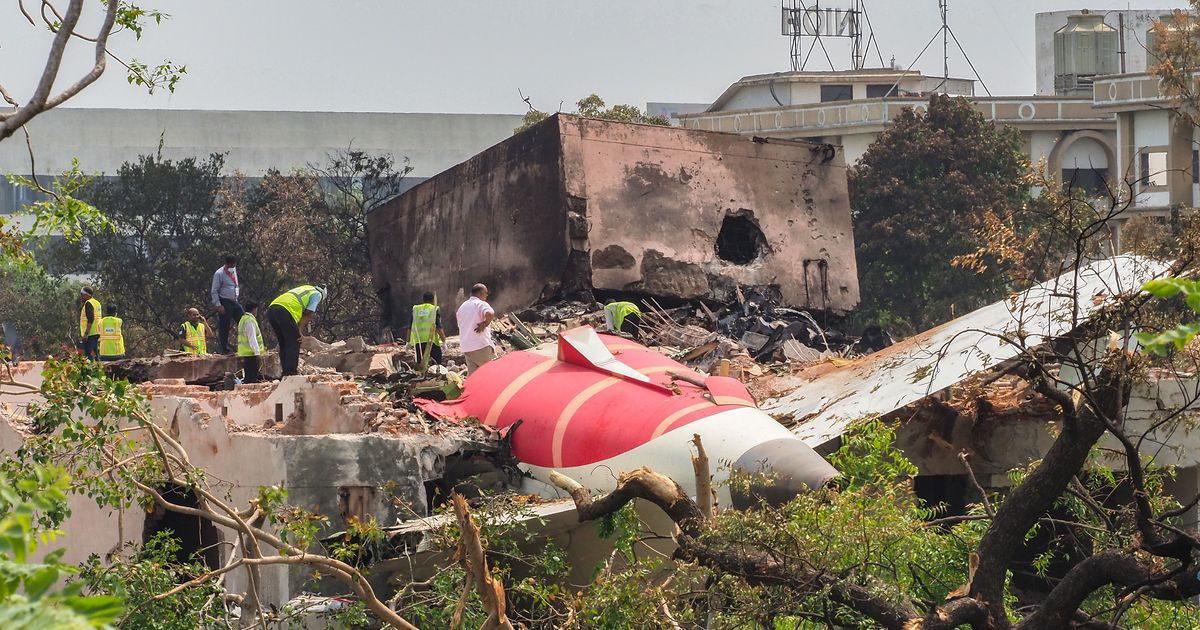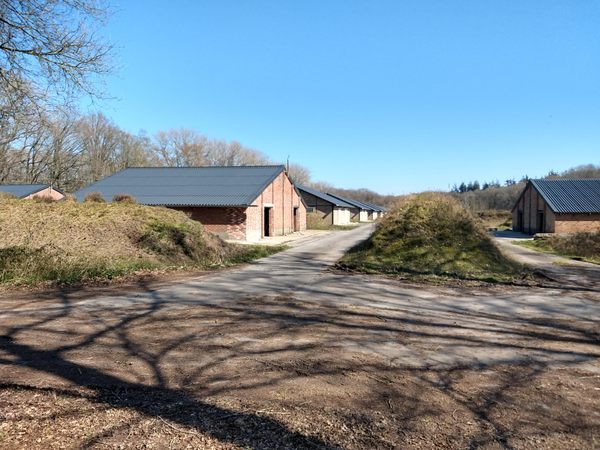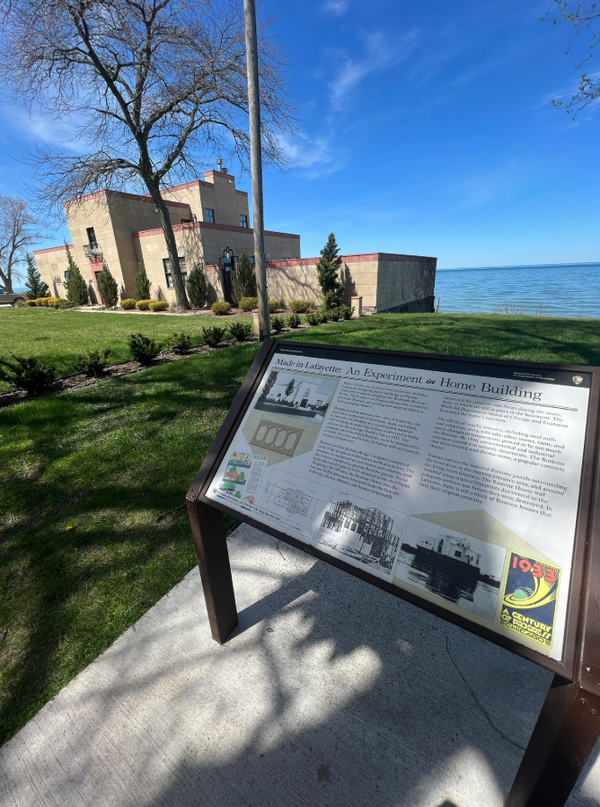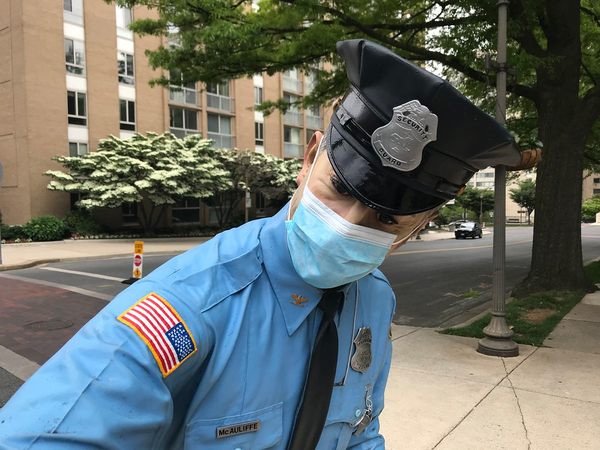This Kansas Town Advertised the World’s Largest Well. It Wasn’t.
Listen and subscribe to the Atlas Obscura Podcast on Apple Podcasts, Spotify, and all major podcast apps. Baudelaire: The city of Greensburg is a city in the southwest part of Kansas. It’s pretty small, less than twice the size of New York’s Central Park, and it’s a hundred miles west of Wichita. In the late 1800s, Greensburg was a small town in a relatively new state that needed to establish some building blocks. But it had two problems. The first was: The city didn’t have a reliable water source. Second: Greensburg had little to attract visitors. Its dusty streets and wooden storefronts didn’t really offer a compelling enough reason for travelers to stop by. Heather Bailey: They really wanted to get Greensburg out there. They really wanted to make a name for Greensburg, and they really wanted to attract people and businesses here. Baudelaire: To ultimately solve both problems, the town government chose to think big when it came to the well. Enormous, in fact. Their big idea: a big well. And it was massive. I’m talking a well over 100 feet deep and more than 30 feet wide. To put that into perspective, it was large enough to hold the biggest animal on earth: the blue whale. Greensburg got its water and the attention that came with claiming to have the world’s largest hand-dug well. Heather: We have people call off all the time that stop into the well and they’re just like, what is this place? My name is Baudelaire, and this is Atlas Obscura, a celebration of the world’s strange, incredible, and wondrous places. Today, we visit Greensburg, Kansas, home to the nation’s largest hand-dug well, to explore the remarkable story of a community’s ingenuity and its extraordinary transformation into one of America’s greenest cities. This is an edited transcript of the Atlas Obscura Podcast: a celebration of the world’s strange, incredible, and wondrous places. Find the show on Apple Podcasts, Spotify, and all major podcast apps. Baudelaire: How do you build the world’s largest hand-dug well? You start by paying 50 cents a day to the first 30 men to show up for work. In today’s money, that’s just under $17 a day. Heather: I mean, if you were kind of just coming through on your way somewhere else, you could stop and dig for a day and get your 50 cents and keep moving. Baudelaire: This is Heather Bailey. She went to high school in Greensburg and today is the director of the Big Well Museum and the director of tourism for the city. Heather: Unfortunately, there’s records that show not everyone got paid, but yeah, that was the promise was 50 whole cents a day. Baudelaire: A constantly changing group of locals and travelers spent about two years digging the well using only shovels, pickaxes, pulleys, and barrels. The hole had to be deep. For perspective, the Big Well is 109 feet deep, about the height of a 10-story building, and 32 feet wide, roughly the length of a fire truck. Remember, this well had a practical function: to supply water for the whole town. But, it still was mainly a move to grab headlines. Heather: That was like just very Americana, you know, and people stopped on road trips. You stopped at parks and let your kids play and, you know, people had picnics. So I think kind of just the appeal of a road trip and people needing somewhere to stop and then also having a world’s largest attraction in a small town, like it was just perfect for this area. Baudelaire: By the 1930s, the Big Well was no longer used for water. The city built a smaller well to supply water instead. Greensburg then poured even more resources into making the Big Well this huge attraction. They put a large dome over it to protect it from weather, and added steel stairs that zigzagged down into the well. And it all worked. Travelers driving across the country flocked to see what all the buzz was about with this world’s largest hand-dug well thing. Heather: They hit a million visitors in like ’57, I think, or the early 60s. Baudelaire: But like a lot of those old 19th century or early 20th century Americana attractions, eventually people stopped coming to see the well in such high numbers. Its novelty kind of wore off, especially when folks found out its initial claim of being the world’s largest hand-dug well wasn’t exactly true. Heather: Yeah, the internet outed us, I guess. Baudelaire: Sort of a bummer, but the larger wells are in Egypt and Italy. Heather: But we’re definitely the nation’s largest hand-dug well, but I think it’s hard for younger generations to get super excited about things like that. Baudelaire: Its initial years of being just the nation’s largest hand-dug well were sort of … eh. The internet really took some of the air out of Greensburg’s biggest attraction. But then in 2007, the city returned to national attention, but not for a quirky roadside attraction. Instead, they were in the headlines because of a disaster. Heather: This was the largest tornado on record at the time. Baudelaire: The tornad

Baudelaire: The city of Greensburg is a city in the southwest part of Kansas. It’s pretty small, less than twice the size of New York’s Central Park, and it’s a hundred miles west of Wichita. In the late 1800s, Greensburg was a small town in a relatively new state that needed to establish some building blocks. But it had two problems. The first was: The city didn’t have a reliable water source. Second: Greensburg had little to attract visitors. Its dusty streets and wooden storefronts didn’t really offer a compelling enough reason for travelers to stop by.
Heather Bailey: They really wanted to get Greensburg out there. They really wanted to make a name for Greensburg, and they really wanted to attract people and businesses here.
Baudelaire: To ultimately solve both problems, the town government chose to think big when it came to the well. Enormous, in fact. Their big idea: a big well. And it was massive. I’m talking a well over 100 feet deep and more than 30 feet wide. To put that into perspective, it was large enough to hold the biggest animal on earth: the blue whale. Greensburg got its water and the attention that came with claiming to have the world’s largest hand-dug well.
Heather: We have people call off all the time that stop into the well and they’re just like, what is this place?
My name is Baudelaire, and this is Atlas Obscura, a celebration of the world’s strange, incredible, and wondrous places. Today, we visit Greensburg, Kansas, home to the nation’s largest hand-dug well, to explore the remarkable story of a community’s ingenuity and its extraordinary transformation into one of America’s greenest cities.
This is an edited transcript of the Atlas Obscura Podcast: a celebration of the world’s strange, incredible, and wondrous places. Find the show on Apple Podcasts, Spotify, and all major podcast apps.

Baudelaire: How do you build the world’s largest hand-dug well? You start by paying 50 cents a day to the first 30 men to show up for work. In today’s money, that’s just under $17 a day.
Heather: I mean, if you were kind of just coming through on your way somewhere else, you could stop and dig for a day and get your 50 cents and keep moving.
Baudelaire: This is Heather Bailey. She went to high school in Greensburg and today is the director of the Big Well Museum and the director of tourism for the city.
Heather: Unfortunately, there’s records that show not everyone got paid, but yeah, that was the promise was 50 whole cents a day.
Baudelaire: A constantly changing group of locals and travelers spent about two years digging the well using only shovels, pickaxes, pulleys, and barrels. The hole had to be deep. For perspective, the Big Well is 109 feet deep, about the height of a 10-story building, and 32 feet wide, roughly the length of a fire truck. Remember, this well had a practical function: to supply water for the whole town. But, it still was mainly a move to grab headlines.
Heather: That was like just very Americana, you know, and people stopped on road trips. You stopped at parks and let your kids play and, you know, people had picnics. So I think kind of just the appeal of a road trip and people needing somewhere to stop and then also having a world’s largest attraction in a small town, like it was just perfect for this area.
Baudelaire: By the 1930s, the Big Well was no longer used for water. The city built a smaller well to supply water instead. Greensburg then poured even more resources into making the Big Well this huge attraction. They put a large dome over it to protect it from weather, and added steel stairs that zigzagged down into the well. And it all worked. Travelers driving across the country flocked to see what all the buzz was about with this world’s largest hand-dug well thing.
Heather: They hit a million visitors in like ’57, I think, or the early 60s.
Baudelaire: But like a lot of those old 19th century or early 20th century Americana attractions, eventually people stopped coming to see the well in such high numbers. Its novelty kind of wore off, especially when folks found out its initial claim of being the world’s largest hand-dug well wasn’t exactly true.
Heather: Yeah, the internet outed us, I guess.
Baudelaire: Sort of a bummer, but the larger wells are in Egypt and Italy.
Heather: But we’re definitely the nation’s largest hand-dug well, but I think it’s hard for younger generations to get super excited about things like that.
Baudelaire: Its initial years of being just the nation’s largest hand-dug well were sort of … eh. The internet really took some of the air out of Greensburg’s biggest attraction. But then in 2007, the city returned to national attention, but not for a quirky roadside attraction. Instead, they were in the headlines because of a disaster.
Heather: This was the largest tornado on record at the time.
Baudelaire: The tornado was almost two miles wide, with wind speeds reaching up to 205 miles per hour. The town was flattened. 95 percent of Greensburg’s structures were destroyed. Twelve people died and more than 60 injured. The city of almost 1,500 at that point went down to a city of about 800. For many people, rebuilding wasn’t an option.
Heather: Because, even if something looked like it wasn’t that bad, the foundations on everything were trashed. There was one family that came up and thought their house was fine, you know, it looked okay. And then in the light of day—keep in mind this happened at about 9:50 at night—so then, in the light of day, when they revisited it, they realized the house had been picked up and quarter turned on their foundation.
Baudelaire: Like over 100 years prior, the people of Greensburg needed to put their heads together to save their city. They needed to rebuild. But this time, they’d do it differently. This time, they would rebuild green. Back in the day, Greensburg was the city with the huge well. And then it became the place where that horrible tornado happened. This new phase would be Greensburg being known as the greenest city per capita in the U.S. And also, like their initial plan with the well, it worked. Today, Greensburg operates on 100 percent renewable energy, primarily powered by wind power. The Greensburg wind farm has 10 turbines powering the grid and selling surplus energy back to the grid. But there was one thing in Greensburg that wasn’t too badly damaged from the tornado. And you can probably guess what that was.
Heather: The outside of the well had a little bit of damage, not much at all. And even the big metal structure on top of it survived.
Baudelaire: For more than a century, the big well has been a defining symbol of Greensburg. It’s a landmark that everyone in the community knows and takes pride in. As Greensburg rebuilt itself, leaders decided to revive the well’s significance, allowing for a fresh start for the town and its famous well.
Heather: They knew they wanted to save the well. It was easy to save it because it was still in such good condition. But they knew that they needed to do something that told the marauder’s story.
Baudelaire: Today, the well is a museum called the Big Well Museum, and it houses artifacts, infographics and displays of both of Greensburg’s reinvention stories. The decision and execution of building the nation’s largest hand-dug well and becoming the greenest city in the U.S. per capita. The inside of the dome structure and throughout the well itself would be a canvas to tell the story of how Greensburg got it done. As director of the museum, Heather says she often sees the impact of the museum in the guests that come in.
Heather: We have families that come in and they’re like, yeah, my great-great-great-grandfather helped dig the well.
Baudelaire: The big well has found new life. Today, it’s more than just a roadside stop where you glance, hop back in your car and keep heading west. You still pull off Route 183 to visit. And while it may no longer hold the title of the world’s largest hand-dug well—just the largest in the country—that’s not really the point, though. What matters now as you step down those stairs is the story it tells. The story of a community and its resilient and innovative people. The Big Well Museum is open 1 to 6 p.m. on Sundays and 9 a.m. to 6 p.m. every other day.
Listen and subscribe to the Atlas Obscura Podcast on Apple Podcasts, Spotify, and all major podcast apps.
Our show is a co-production of Atlas Obscura and Stitcher Studios. The people who make our show include Dylan Thuras, Doug Baldinger, Chris Naka, Kameel Stanley, Johanna Mayer, Manolo Morales, Amanda McGowan, Alexa Lim, Casey Holford, and Luz Fleming. Our theme music is by Sam Tindall.
























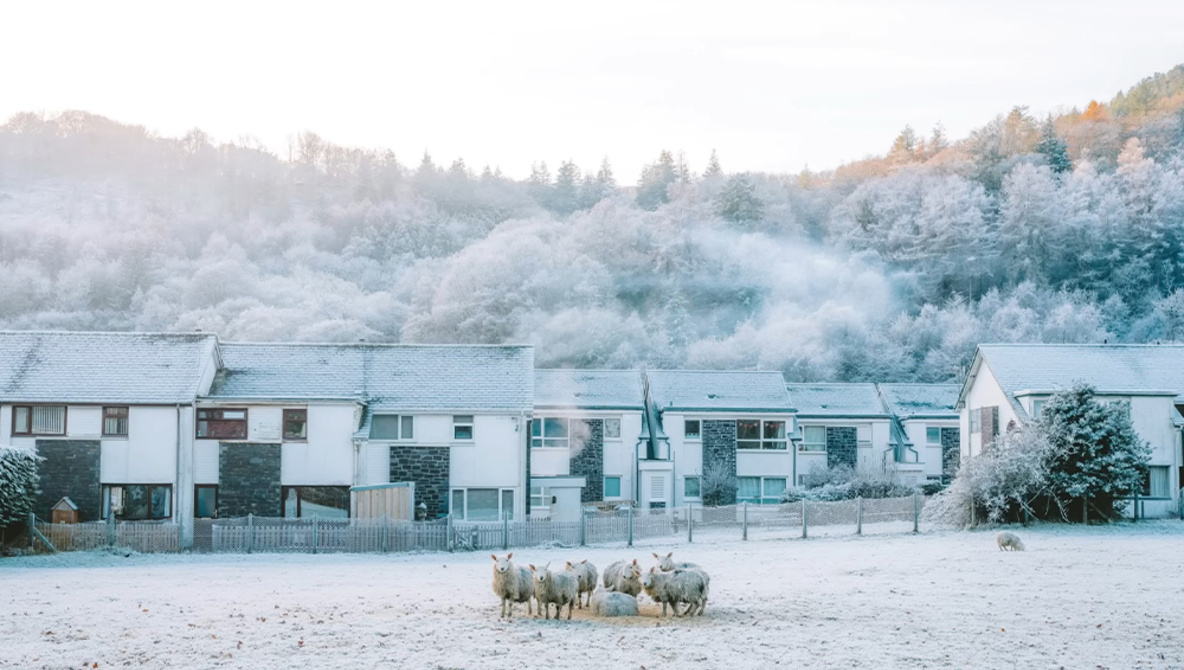




























































































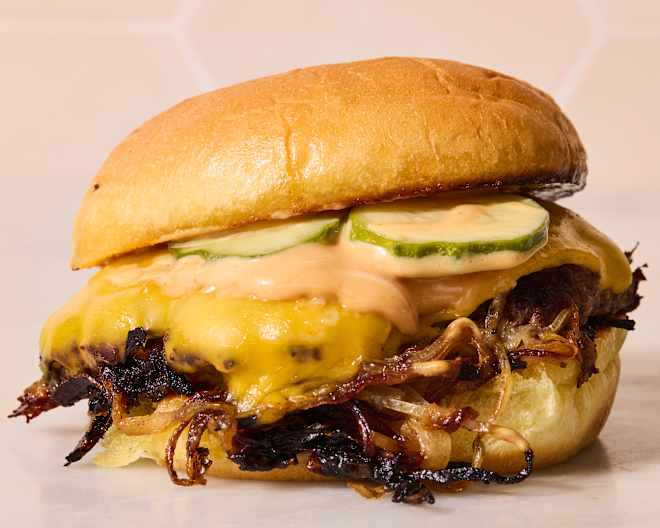




























































.jpg)





























